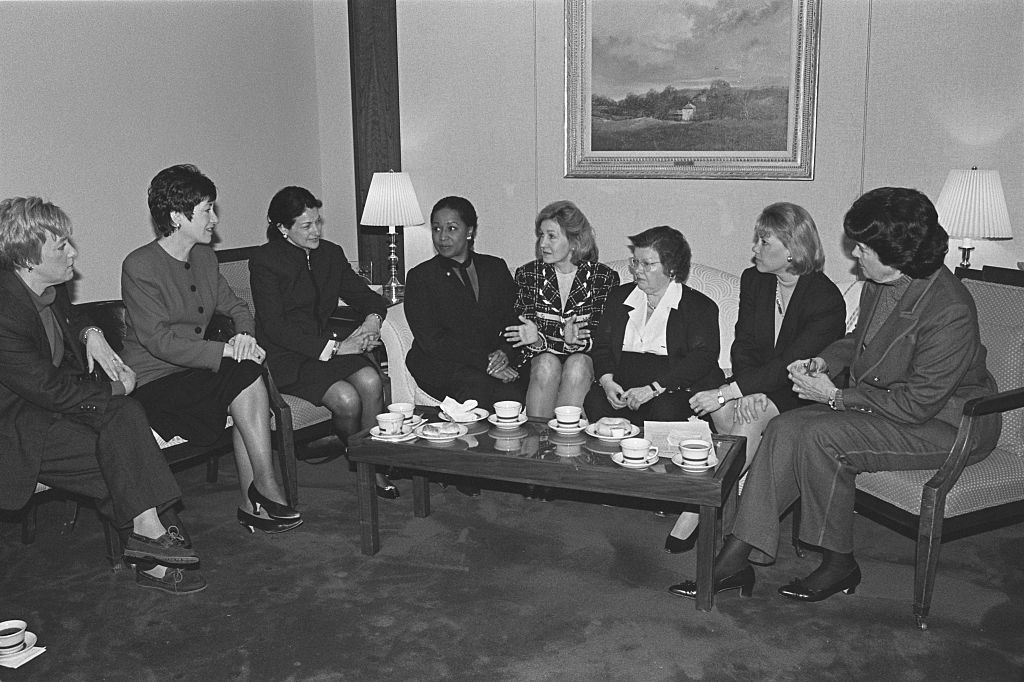
With the continuing chaos on Capitol Hill involving the budget, DOJ investigations and the looming government shutdown, the Senate has received unexpected attention for a relatively mundane reason. Last week, Senate Majority Leader Senator Chuck Schumer (D-N.Y.) announced a major change to the long-standing informal dress code: “Senators are able to choose what they wear on the Senate floor,” he stated.
Although Schumer is certainly not a fashion rebel—informing reporters that he plans on continuing wearing a suit—the move was seen as no less than a revolution, especially for an establishment known for its adherence to tradition and archaic protocols, not its fashion-forwardness.
While some welcomed the change—most notably Sen. John Fetterman (D-Pa.) who is known for his unique style of hoodies and shorts—others lamented the disregard to tradition and decorum, arguing that the loosening of the dress code is just another step in degrading the institution. Sen. Rick Scott (R-Fla.) even led a group of 46 GOP senators demanding Schumer to reverse the decision.
The Senate might not be the most obvious place to begin a war over styles, but this recent episode is another demonstration to how much fashion has become part of our political discourse in recent years. Clothes matter, and even more so the politics around them.
Yet despite the high emotions on both sides of this debate, the regulation of dress on Capitol Hill is far more elusive than it looks. Unlike many other workplaces and occupations, there is not a formal or rigid dress code that members of Congress must follow.
In fact, in its 230 years history, the only specific dress code to exist was a 1837 House rule that banned hats on the floor. Mandating, “No member is to come into the House with his head covered, nor to remove from one place to another with his hat on, nor is to put on his hat in coming in or removing, until he be set down in his place,” it was enacted as a move to mark American individualism and independence that separated the U.S. republic from the British crown. Yet even this rule was revised in 2019, creating an exception for religious or medical head-covering to accommodate Rep. Ilhan Omar (D-Minn.).
If the House does have some rules, set by the speaker who is responsible for setting the dress codes, the Senate doesn’t have such mechanism. It often follows the House in terms of decorum requirements, but these rules are not official and serve more as unwritten custom that is left to the Senate’s sergeant-at-arms—the sole authority to determine the policies—to enforce.
Until the late 20th century, members of both houses were only required to wear “proper attire” while in session, never really defining what “proper” actually entailed. However, just like other corporate workspaces that are male dominated, the suit and tie quickly became the outfit of choice. This is of course not surprising. The suit wields power and tradition. It is masculine and authoritative, and thus fits naturally to a place like the U.S. Congress.
The need to specify decorum rules became more pertinent as politicians and the dealings of Congress came more under public view. Indeed, it was only in 1979, during the 96th Congress, when the House began live televised broadcasting from the floor, that the speaker finally defined the category of “proper” with regards to appearance. For the first time, male members were required to wear suits and ties. The 17 women members serving at the time, however, were completely ignored. Not feeling the need to address, or to control, such a miniscule minority, the dress code for them remained vague, only mandating “appropriate attire.”
As the number of women in Congress increased, so was the need to regulate their appearance. Not surprisingly, many of the rules that were added since the 1970s targeted women’s attire. In the House, women politicians such as Shirley Chisholm (D-N.Y.), Pat Schroeder (D-Colo.) and Susan Molinari (R-N.Y.) have pushed back against convention, sporting bold-color outfits and occasionally even pantsuits. And in 2017, women members of Congress protested House rules that banned sleeveless dresses and open-toe shoes, leading a bipartisan demand for the “right to bare arms.”
Yet if women have been making progress in the House, the Senate proved to be a much more elusive target. It wasn’t until 1992, in an election year the press dubbed as “The Year of the Woman,” that female senators became a significant minority that could no longer be ignored.
By 1993, there were six women in the Senate, negotiating their place in this heavily masculine environment. The new cohort of women was also more willing to push against institutional norms, determined to reclaim their equal space with men. Whereas issues like bathrooms and access to the gym became high on the agenda, so did women’s appearance.

Although the Senate did not have specific dress code that banned pantsuits for women, the willingness of Sen. Carol Moseley Braun (D-Ill.), the first Black woman to serve in the Senate, or Sen. Barbara Mikulski (D-Md.) to appear wearing trousers was seen as a rebellion, or as Mikulski put it, “a seismographic event.” Despite vocal complaints from their male colleagues, the then sergeant-at-arms, Martha S. Pope—the first woman to fulfill this role—refused to reprimand them due to the lack of specific regulations.
The senators’ demand to wear pants was less about creating an alternative to the dress code, but more about wanting it to apply equally to all genders. Understanding the power of the suit, the women senators also wanted to reclaim it.
The “pantsuit rebellion” as the press dubbed the debacle, eventually led Pope to update and clarify the code. Women’s “appropriate attire” was now expanded to include pantsuits and trousers, remaining vague enough to provide them with the freedom to fashion their image as they pleased. Men, however, were now required to wear only suits with ties, salvaging for themselves the only masculine look that women could not reclaim.
The willingness of Sen. Carol Moseley Braun, the first Black woman to serve in the Senate, or Sen. Barbara Mikulski to appear wearing trousers was seen as a rebellion.
To be sure, even with this limited option, men senators could use their appearance to make a political statement. While not necessarily defying these directives, senators like Lindsey Graham and Ted Cruz have defiantly appeared without ties to vote from the cloakroom as a way to convey their protest. Indeed, it seems that their anger about the current loosening of the rules is not because of the legitimization of casualwear—a trend that has been silently happening, even in Congress—but the fact that they won’t be able to use such stunts in the future.
And this is why the current change seems so remarkable. If women have managed to reclaim the power of the suit and make it a staple of their wardrobe, while also finding creative ways to be noticeable, male senators can now have this opportunity to use their clothes to fashion their image.
Fetterman, maybe more than any other men senator, understands the power of clothes. The casualness of his style conveys authenticity, directness, and most of all, relatability—qualities every politician desires, and which became Fetterman’s unique brand. He is not afraid to use fashion part of his political vocabulary, and now he will get a chance to do it from the floor.
Dress codes might not be the most urgent matter on the Congress’ plate right now. Even Fetterman is willing to conform and wear suits in return for passing the budget. However, the attention this seemingly unimportant change has gotten, also show us why what we wear matter. Fashion allows to reclaim and adjust old conventions, as well as to rebel against them and invent new ones. We are already doing it in our homes, in our streets, and in our workplace. It is time Congress will follow suit.
Up next:
U.S. democracy is at a dangerous inflection point—from the demise of abortion rights, to a lack of pay equity and parental leave, to skyrocketing maternal mortality, and attacks on trans health. Left unchecked, these crises will lead to wider gaps in political participation and representation. For 50 years, Ms. has been forging feminist journalism—reporting, rebelling and truth-telling from the front-lines, championing the Equal Rights Amendment, and centering the stories of those most impacted. With all that’s at stake for equality, we are redoubling our commitment for the next 50 years. In turn, we need your help, Support Ms. today with a donation—any amount that is meaningful to you. For as little as $5 each month, you’ll receive the print magazine along with our e-newsletters, action alerts, and invitations to Ms. Studios events and podcasts. We are grateful for your loyalty and ferocity.





